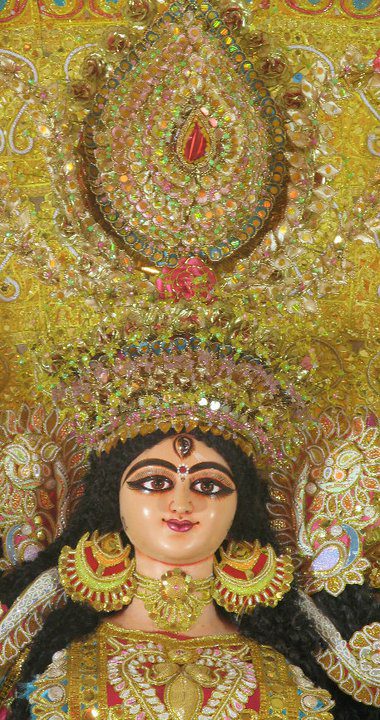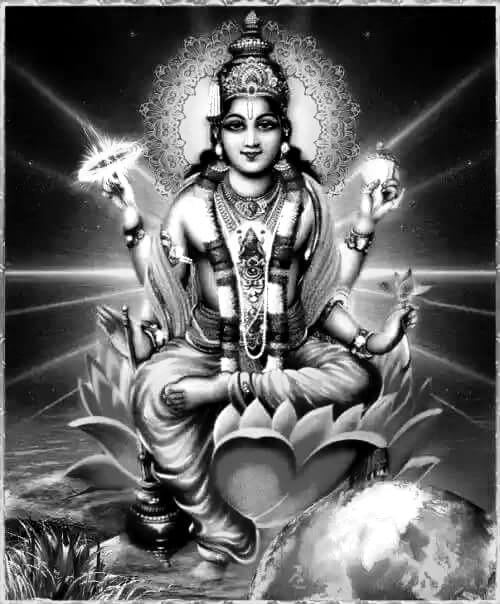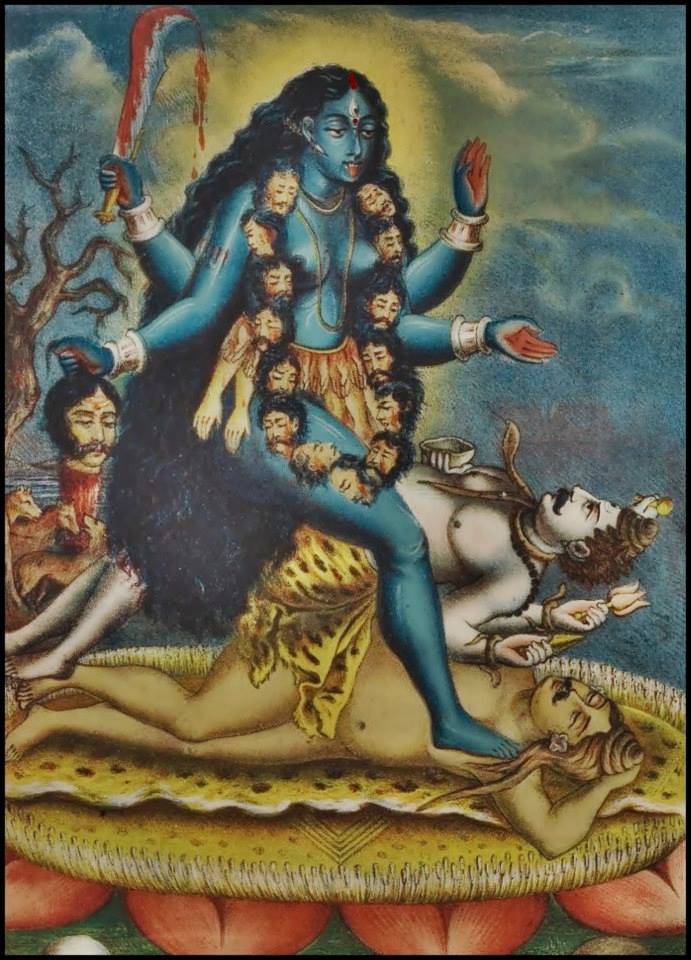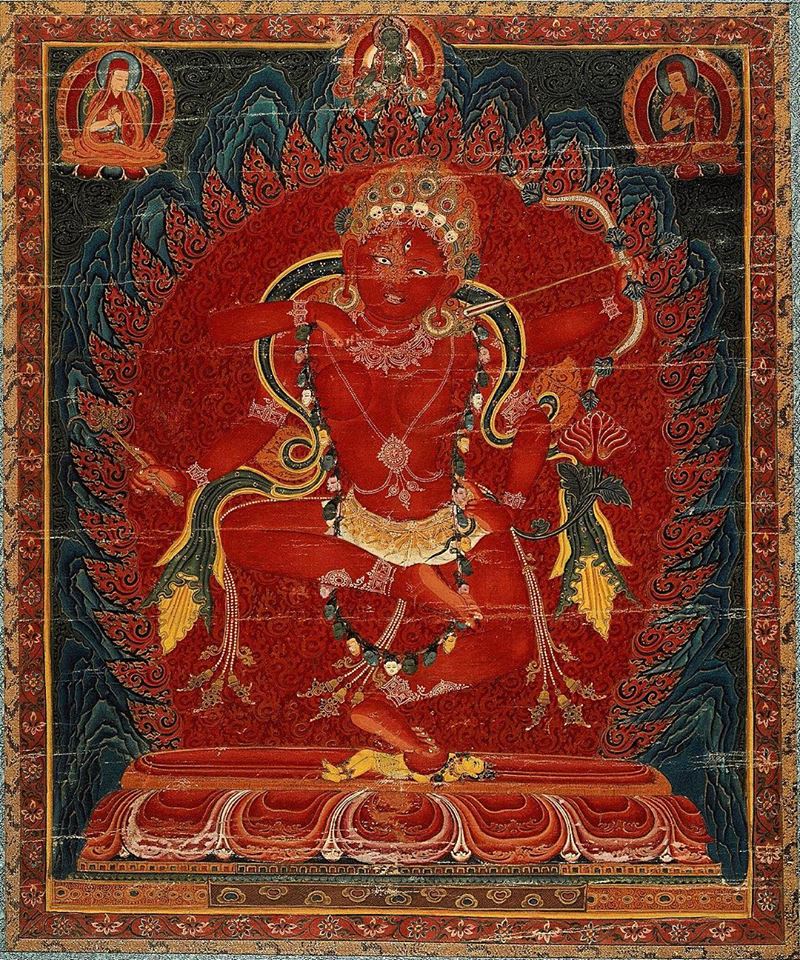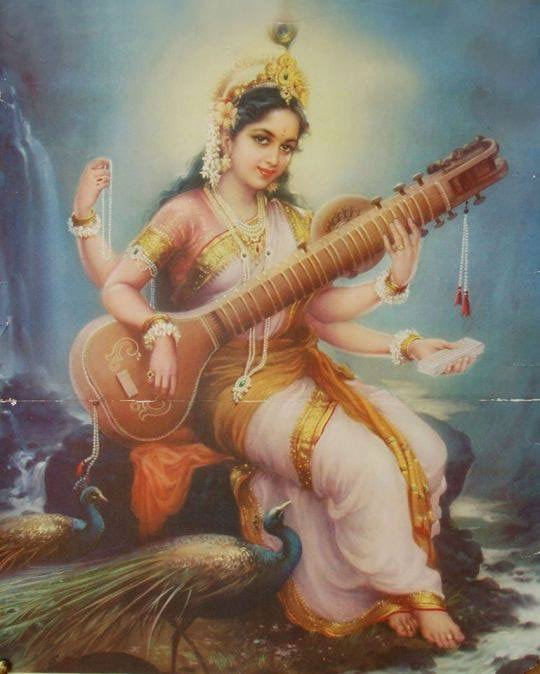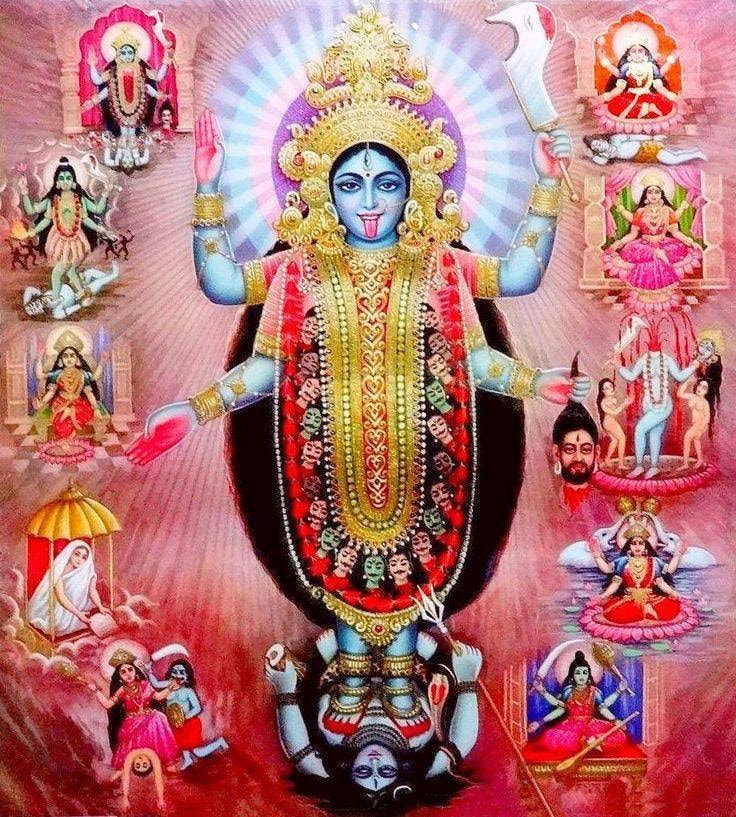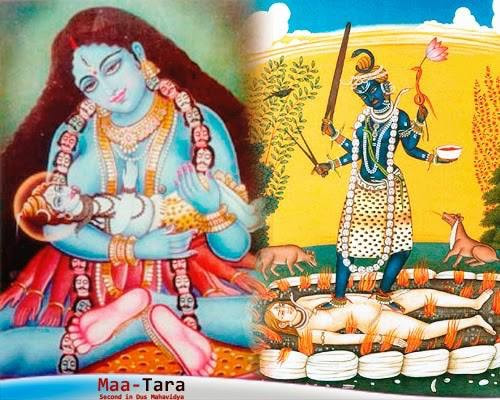By Professor Subhash Kak
Read book online:
http://bit.ly/39w7RhF
Download pdf book:
http://bit.ly/37mPjP9
॥ गर्भोपनिषत् ॥
यद्गर्भोपनिषद्वेद्यं गर्भस्य स्वात्मबोधकम् ।
शरीरापह्नवात्सिद्धं स्वमात्रं कलये हरिम् ॥
Whence are living beings born?
What is life and how does it begin? How does awareness dawn in the developing fetus? These are questions that Sage Pippalāda asks in this astonishing text. Pippalāda is also credited with the answers in the Praśna Upaniṣad, which is one of the primary Upanishads and one of the oldest. The six questions in the Praśna Upaniṣad are:
1. Whence are living beings born?
2. How many devas (powers) uphold and illumine a living being?
3. Whence does life come into the body? How does it abide? How does it go out of the body? How does life interface with the external world? How is it connected with the Self?
4. What powers are quiescent when one sleeps, and what powers are awake? Who sees the dreams? Who experiences happiness? In whom are all these established?'
5. If one were to meditate on the symbol “Om” until death, what would one obtain by doing so?
6. Who is the person with sixteen parts? (This is a question about the different modes of the Self.)
These are the deepest questions of life and remain as urgent now as they were three or four thousand years ago. My objective is not to revisit these questions but only to focus on Pippalāda’s answers provided in the Garbha Upaniṣad, which is a companion text with deeper responses to some of these questions.
There is no unanimity about the date of the Garbha Upaniṣad. Since it is ascribed to Pippalāda, we need to determine this sage’s place in the Vedic tradition, although it is believed that the text may not be as old as the sage. Pippalāda is also the author of the Atharvaveda śākhā named after him (Paippalāda śākhā).
If the Ṛgveda is to be taken to be no later than 2000 BCE as suggested by hydrological evidence related to the drying up of the Sarasvatī River that the Ṛgveda celebrates as flowing from the mountains to the sea, then as a principal arranger of the Atharvaveda, Pippalāda should be assigned to at least the middle of the second millennium BCE. But there are some Western scholars who believe these dates are a thousand years too long and the Garbha Upanisad should be assigned to 600 BCE or so.
According to the Purāṇas, Pippalāda was the disciple of the Ṛṣi Vedasparśa, and he instructed Yudhiṣṭhira in the significance of the Aṅgāravrata, which is based on a dialogue between Śukra and Virocana.
The physiological knowledge in the Garbha Upaniṣad is consistent with that found in the oldest Upaniṣads. Like the other texts, it speaks of recursion, but it doesn’t list as many channels (veins and nerves) as some other texts do. This indicates that this Upaniṣad may be older than has been assumed.
Pippalāda’s six questions in the Praśna Upaniṣad are reminiscent of the six darśanas that touch upon six different aspects of reality: logic (nyāya), lived life (mīmāṃsā), origins (sāṅkhya), devas within (yoga), overarching reality (vedānta), and modifications (vaiśesika).
This is not an argument for the lateness of the Praśna Upaniṣad, but rather for the remote antiquity of six bases to reality, which mirror the six directions.
For a proper understanding of the Garbha Upaniṣad it is essential to understand the subtle ideas of recursion, physiology and consciousness, channels in the body, and causal chain and birth.
Like other sages of the Upaniṣads, Pippalāda is systematic and rational. The physical basis of life, and the sequence following the development of the embryo, is clearly defined. He describes the basis of life mystically in categories that go, in sequence, from 2 to 7. In the body emerge 8 natures and in it arise 16 modifications that are similar to the tattvas of Sāṅkhya and the modes indicated in Praśna Upaniṣad 6.4.
The embryo is taken to have become jīva (conscious self) in the seventh month, and in the eighth month, it becomes complete in every sense. This gives the time the fetus becomes a person, with attendant legal rights. It is not explained how the jīva comes to be attached to the body.
Although other passages indicate that the jīva resides in the heart’s recess, it also suffuses the entire body; furthermore, its identity with the Puruṣa means that, mysteriously, it is one with the entire universe. The distinction also implies the existence of the subtle body (liṅgam).
In the Sarvasāra Upaniṣad 7, the subtle body is defined as created out of the mind and other subtle elements that reside in the knot of the heart. The consciousness within this subtle body is called the “knower of the field” (kṣetrajña).
The body is an instrument of the heart, but for it to be able to do what it can, the kṣetrajña must be free: this is mokṣa or mukti.
Recursion
Recursion, the mirroring of the cosmos at several levels, including at the level of the body, is one of the central ideas of the Upaniṣads. It is clearly stated, for example, in the Chāndogya Up. 8.1.1 and 3, where we are told that within the heart is this small place with the heaven, earth, sun, moon, and stars where the lights of the universe shine.
अथ यदिदमस्मिन्ब्रह्मपुरे दहरं पुण्डरीकं वेश्म दहरोऽस्मिन्नन्तराकाशस्तस्मिन्यदन्तस्तदन्वेष्टव्यं तद्वाव विजिज्ञासितव्यमिति ॥ ८. १. १ ॥
यावान्वा अयमाकाशस्तावानेषोऽन्तर्हृदय अकाश उभे अस्मिन्द्यावापृथिवी अन्तरेव समाहिते उभावग्निश्च वायुश्च सूर्याचन्द्रमसावुभौविद्युन्नक्षत्राणि यच्चास्येहास्ति यच्च नास्ति सर्वं तदस्मिन्समाहितमिति
॥ छान्दोग्योपनिषद् ८. १. ३ ॥
There is in this city of Brahman (the body) the mansion in the shape of a lotus and in it the small inner ākāśa (sky). What lies there that should be sought, which one should seek to understand?’
As large indeed as is this ākāśa, so large is that ākāśa in the heart. Within it are contained both heaven and earth, both fire and air, both sun and moon, lightning and stars; whatever there is of him (Self) in this world and whatever is not, all that is contained within it. (Chandogya Up. 8.1.1 and 8.1.3)
This recursion is also expressed across time, and it leads to a variety of paradoxes that, the Vedas tell us, cannot be explained away by language. It is described most clearly in the last (fifth) section of the Garbha Upaniṣad in which the body itself is seen as the ground of the sacrifice.
Speaking of recursion, one must also mention hiraṇyagarbha, the golden womb out of which, the Veda tells us, the universe emerged. In an abstract sense, creation at the cosmic level is to be understood in a sense similar to that at the individual level.
Physiology and consciousness
Now we consider the most interesting assertion that the body consists of 107 marmas (weak spots), 180 sutures or junction points, 109 snāyu (sinews), 700 veins, 500 majjā (muscle), 360 bones, and forty-five million hairs.
The numbers 180 and 360 are obviously astronomical and related to the number of days in the civil year. Their occurrence is the assertion of the mirroring of the cosmos in the body.
The numbers 107 and 109 are also, but less obviously, astronomically related. I have shown elsewhere (see References 1 and 2) that the Vedic Ṛṣis characterized the universe by the measure of 108, for it represents the distance to the sun and the moon from the earth, in multiples of their respective diameters. If the body mirrors the universe, it will have 108 parts, with 107 vulnerable joints (marmas), and 109 lashes to hold them together (snāyu).
Other Upaniṣads (e.g. Aitareya 3.3) speak of four kinds of life: born alive, born from egg, born from moisture (insects), and born from germ (plants).
बीजानीतराणि चेतराणि चाण्डजानि च जारुजानि च स्वेदजानि चोद्भिज्जानि चाश्वा गावः पुरुषा हस्तिनो यत्किञ्चेदं प्राणि जङ्गमं चपतत्रि च यच्च स्थावरं सर्वं तत्प्रज्ञानेत्रं प्रज्ञाने प्रतिष्ठितं प्रज्ञानेत्रो लोकः प्रज्ञा प्रतिष्ठा प्रज्ञानं ब्रह्म ॥ ऐतरेय उपिनषत् ३.३ ॥
[These all] are born of eggs, of wombs, of moisture, and of sprouts, namely horses, cattle, men, elephants, and all creatures that there are that move or fly and those that do not move. All these are guided by consciousness and supported by consciousness; the basis is consciousness. Consciousness is Brahman. (Aitareya Up. 3.3)
Consciousness is not taken to exist only in the human, but in all life.
Channels in the body (Nāḍis)
The count of 700 channels does not go to the usual details that are to be found in other Upaniṣads. Thus Pippalāda instructs Āślavāyana in Praśna Upaniṣad 3.6:
अत्रैतदेकशतं नाडीनं तासां शतं शतमेकैकस्या द्वासप्ततिर्द्वासप्ततिः प्रतिशाखानाडीसहस्राणि भवन्त्यासु व्यानश्चरति ॥ प्रश्नोपनिषत्/तृतीयः प्रश्नः ३.६ ॥
Here there are one hundred and one channels;
each of these has one hundred more;
each further has seventy-two thousand branching channels;
through which the vyāna (breath) courses. (Praśna Up. 3.6)
This means that the total number of channels (veins, nerves) equals: 101 + 101×100 + 101×100×72,000 = 727,210,201. Of these, the most significant channel is the suṣumnā.
Bṛhadāraṇyaka Upaniṣad 2.1.19 speaks of how the Self returns to the body along the 72,000 hitā channels, which branch off from the heart to all parts of the body. This together with a further description of these nerves of four colors is described well in the Kauṣītaki Brāhmaṇa Upaniṣad:
तं होवाचाजातशत्रुर्यत्रैष एतद्बालाके पुरुषोऽशयिष्ट यत्रैतदभूद्यत एतदागाद्धिता नाम हृदयस्य नाड्यो हृदयात्पुरीततमभिप्रतन्वन्ति तद्यथासहस्रधा केशो विपाटितस्तावदण्व्यः पिङ्गलस्याणिम्ना तिष्ठन्ति । शुक्लस्य कृष्णस्य पीतस्य लोहितस्येति तासु तदा भवति । यदा सुप्तःस्वप्नं न कञ्चन पश्यत्यस्मिन्प्राण एवैकधा भवति तथैनं वाक्सर्वैर्नामभिः सहाप्येति चक्षुः सर्वै रूपैः सहाप्येति श्रोत्रं सर्वैः शब्दैः सहाप्येतिमनः सर्वैर्ध्यातैः सहाप्येति स यदा प्रतिबुध्यते यथाग्नेर्ज्वलतो सर्वा दिशो विस्फुलिङ्गा विप्रतिष्ठेरन्नेवमेवैतस्मादात्मनः प्राणा यथायतनंविप्रतिष्ठन्ते प्राणेभ्यो देवा देवेभ्यो लोकास्तद्यथा क्षुरः क्षुरध्यानेऽवहितः स्याद्विश्वंभरो वा विश्वंभरकुलाय एवमेवैष प्राज्ञ आत्मेदंशरीरमात्मानमनुप्रविष्ट आ लोमभ्य आ नखेभ्यः ॥ १९ ॥
तमेतमात्मानमेतमात्मनोऽन्ववस्यति यथा श्रेष्ठिनं स्वास्तद्यथा श्रेष्ठैः स्वैर्भुङ्क्ते यथा वा श्रेष्ठिनं स्वा भुञ्जन्त्येवमेवैषप्राज्ञात्मैतैरात्मभिर्भुङ्क्ते । एवं वै तमात्मानमेत आत्मानो भुञ्जन्ति । स यावद्ध वा इन्द्र एतमात्मानं न विजज्ञे तावदेनमसुरा अभिबभूवुः । सयदा विजज्ञेऽथ हत्वासुरान्विजित्य सर्वेषां देवानां श्रैष्ठ्यं स्वाराज्यमाधिपत्यं परीयाय एवैवं विद्वान्सर्वान्पाप्मनोऽपहत्य सर्वेषां भूतानां श्रैष्ठ्यंस्वाराज्यमाधिपत्यं पर्येति य एवं वेद य एवं वेद ॥ कौषीतकिब्राह्मणोपनिषत् ४. २० ॥
The nerves of the heart named hitā extend from the heart of the person towards the surrounding body. Fine as a hair divided a thousand-fold, they stand full of thin essence of various colors, white, black, yellow, and red. In these one remains when sleeping and sees no dream, becoming one with the prāṇa alone.
Then speech with all names goes to it, the eye with all forms goes to it, the ear with all sounds goes to it, and the mind with all thoughts goes to it. And when he awakes, then as from a blazing fire sparks proceed in all directions, thus from that self the prāṇas proceed, each towards its place, from the prāṇas the gods (the senses), from the gods the worlds. And as a razor might be placed in a razor-case, or as fire in the fire-place, even so this conscious self enters the body to the very hairs and nails.
On that self depend other selves, as the men follow the chief, or as his own people are of service to the chief, even so these other selves are of service to that self. So long Indra did not understand this self, the Asuras defeated him. When he understood this, striking down and conquering the Asuras, he attained pre-eminence among all gods and all beings, sovereignty and supremacy. And thus also he who knows this obtains pre-eminence among all beings, sovereignty, supremacy — he who knows this, yes, he who knows this. (Kauṣītaki Brāhmaṇa Upaniṣad 4.19–20)
Causal chain and birth
In Section 4, the Upaniṣad speaks of how the newborn forgets the causal chain at the moment of birth.
This echoes the Bhagavad Gītā:
इच्छाद्वेषसमुत्थेन द्वन्द्वमोहेन भारत ।
सर्वभूतानि सम्मोहं सर्गे यान्ति परन्तप ।। ७.२७ ।।
By the rising together of desire and envy by the confusion of duality, all beings, when born, fall into the state of forgetting. (Bhagavad Gītā 7.27)
By doing this, it is able to fit the individual’s embodiment in the womb that is consistent with the idea of rebirth.
The Text of the Garbha Upanishad
ॐ सह नाववतु ।
सह नौ भुनक्तु ।
सह वीर्यं करवावहै ।
तेजस्वि नावधीतमस्तु मा विद्विषावहै ।
ॐ शान्तिः शान्तिः शान्तिः ॥
Om! May we be protected; may we be nourished; may we act together with energy; may our study be vigorous and effective; may we not mutually dispute. Om! śāntiḥ, śāntiḥ, śāntiḥ.
ॐ पञ्चात्मकं पञ्चसु वर्तमानं षडाश्रयं
षड्गुणयोगयुक्तम् ।
तत्सप्तधातु त्रिमलं द्वियोनि
चतुर्विधाहारमयं शरीरं भवति ॥
The body is fivefold in nature (the five elements), existing in the five, depending on the six supports (tastes of food), connected with the six qualities, [consisting of] seven dhātus (tissues), three impurities, having two yonis (sexes), and [nourished by] four kinds of food.
पञ्चात्मकमिति कस्मात् पृथिव्यापस्तेजोवायुराकाशमिति ।
अस्मिन्पञ्चात्मके
शरीरे का पृथिवी का आपः किं तेजः को वायुः किमाकाशम् ।
तत्र यत्कठिनं सा पृथिवी यद्द्रवं ता आपो यदुष्णं
तत्तेजो यत्सञ्चरति स वायुः यत्सुषिरं तदाकाशमित्युच्यते ॥
How is it pancātmakam (five-fold)? Because of the five: earth, water, fire, air and ether. In this five-fold body, what is earth, what is water, what is fire, what is air, and what is ether? It is said that what is hard is earth, what is fluid is water, what is warm is fire, what moves is air, and what is space is ether.
तत्र पृथिवी धारणे आपः पिण्डीकरणे तेजः प्रकाशने
वायुर्गमने आकाशमवकाशप्रदाने । पृथक् श्रोत्रे
शब्दोपलब्धौ त्वक् स्पर्शे चक्षुषी रूपे जिह्वा रसने
नासिकाऽऽघ्राणे उपस्थश्चानन्दनेऽपानमुत्सर्गे बुद्ध्या
बुद्ध्यति मनसा सङ्कल्पयति वाचा वदति ।
There the earth is to support, water is to consolidate, fire is for light, air is for movement, and ether is to provide space. Separately, ears are to receive words, the skin for touch, eyes to see form, tongue for taste, and nose for smell. The genitalia are for pleasure and apāna for evacuation. One cognizes with the intellect (buddhi), envisions with the mind (manas), and speaks with words (vāk).
षडाश्रयमिति
कस्मात् मधुराम्ललवणतिक्तकटुकषायरसान्विन्दते ।
षड्जर्षभगान्धारमध्यमपञ्चमधैवतनिषादाश्चेति ।
इष्टानिष्टशब्दसंज्ञाः प्रतिविधाः सप्तविधा भवन्ति ॥ १॥
How is the six-fold support? It is said to be the six tastes [of food]: sweet, acid, salty, pungent, bitter, and astringent. And ṣaḍja, ṛṣabha, gāndhāra, pancama, madhyama, dhaivata, niṣāda, together with agreeable and disagreeable sounds and prayer, make seven categories (or ten categories, प्रणिधानाद्दशविधा भवन्ति, which is a variant reading):
शुक्लो रक्तः कृष्णो धूम्रः पीतः कपिलः पाण्डुर इति ।
सप्तधातुमिति कस्मात् यदा देवदत्तस्य द्रव्यादिविषया
जायन्ते ॥ परस्परं सौम्यगुणत्वात् षड्विधो रसो
रसाच्छोणितं शोणितान्मांसं मांसान्मेदो मेदसः
स्नावा स्नाव्नोऽस्थीन्यस्थिभ्यो मज्जा मज्ज्ञः शुक्रं
शुक्रशोणितसंयोगादावर्तते गर्भो हृदि व्यवस्थां
नयति । हृदयेऽन्तराग्निः अग्निस्थाने पित्तं पित्तस्थाने
वायुः वायुस्थाने हृदयं प्राजापत्यात्क्रमात् ॥ २॥
It has white, red, black, smoky gray, yellow, tawny and pale as the colors. What are the seven dhātus (tissues) when Devadatta (any person) desires enjoyment of objects?
From the proper combination of qualities, six types of taste (rasa) emerge.
From relish of food, blood is created, from it flesh, thence fat, bones, marrow, semen.
By the combination of semen and blood the embryo (garbha) is born, and its growth is regulated by the heart (mother’s heartbeat as well as the embryo’s).
[The seven dhātus] are in the heart where there’s inner fire; at the place of the fire is pitta (bile); at the pitta-organs is movement (vāyu); and at the vāyu-place is the heart, all growing in order according to the law (Prajāpati).
ऋतुकाले सम्प्रयोगादेकरात्रोषितं कलिलं भवति
सप्तरात्रोषितं बुद्बुदं भवति अर्धमासाभ्यन्तरेण पिण्डो
भवति मासाभ्यन्तरेण कठिनो भवति मासद्वयेन शिरः
सम्पद्यते मासत्रयेण पादप्रवेशो भवति ।
When ready, on the joining [of the male and female], [the embryo] after [a day] and night is in a mixed (semi-fluid) state; after seven days it becomes a bubble; after a fortnight, a solid mass, and in a month, it hardens. In two months, it develops the head; in three months, the feet grow.
अथ चतुर्थे मासे
जठरकटिप्रदेशो भवति । पञ्चमे मासे पृष्ठवंशो भवति ।
षष्ठे मासे मुखनासिकाक्षिश्रोत्राणि भवन्ति ।
In the fourth month, belly and hip are formed; in the fifth month, the backbone is formed; in the sixth month, nose, eyes and ears are formed.
सप्तमे मासे जीवेन संयुक्तो भवति ।
अष्टमे मासे सर्वसम्पूर्णो भवति ।
In the seventh month, [the embryo] comes to have the jīva (conscious self), and in the eighth month, it becomes complete in every sense.
पितू रेतोऽतिरिक्तात् पुरुषो भवति । मातुः
रेतोऽतिरिक्तात्स्त्रियो भवन्त्युभयोर्बीजतुल्यत्वान्नपुंसको भवति ।
If the father’s seed is more potent, it becomes male; if the mother’s seed is stronger, it becomes female. If the seeds are equal, it becomes an intersexual (napuṃsaka, neither male, nor female).
व्याकुलितमनसोऽन्धाः खञ्जाः कुब्जा वामना
भवन्ति । अन्योन्यवायुपरिपीडितशुक्रद्वैध्याद्द्विधा
तनुः स्यात्ततो युग्माः प्रजायन्ते ॥
If [at the time of impregnation] the parents are agitated [that is the seeds of the parents are not in a normal or healthy state], the child will be blind, crippled, hunch-backed or stunted. If the vital air moves around, the seed enters in two parts, resulting in twins.
पञ्चात्मकः समर्थः
पञ्चात्मकतेजसेद्धरसश्च सम्यग्ज्ञानात् ध्यानात्
अक्षरमोङ्कारं चिन्तयति । तदेतदेकाक्षरं ज्ञात्वाऽष्टौ
प्रकृतयः षोडश विकाराः शरीरे तस्यैवे देहिनाम् ।
Enabled by the five-fold self, the intelligence of the five elements emerges, and he meditates on the imperishable syllable Om. With the knowledge of the syllable, he understands the eight natures [five sense organs, the mind, intellect and ego] and their sixteen modifications belong to the self-residing in the body.
अथ मात्राऽशितपीतनाडीसूत्रगतेन प्राण आप्यायते । अथ
नवमे मासि सर्वलक्षणसम्पूर्णो भवति पूर्वजातीः स्मरति
कृताकृतं च कर्म विभाति शुभाशुभं च कर्म विन्दति ॥ ३॥
Whatever is consumed or drunk by the mother passes through the nerves and vessels to the child, becoming the source of his satisfaction. During the ninth month, all outer signs attain completeness. And he is reminded of his previous birth, and recounts the good and bad deeds committed.
नानायोनिसहस्राणि दृष्ट्वा चैव ततो मया ।
आहारा विविधा भुक्ताः पीताश्च विविधाः स्तनाः ॥
जातस्यैव मृतस्यैव जन्म चैव पुनः पुनः ।
अहो दुःखोदधौ मग्नः न पश्यामि प्रतिक्रियाम् ॥
यन्मया परिजनस्यार्थे कृतं कर्म शुभाशुभम् ।
एकाकी तेन दह्यामि गतास्ते फलभोगिनः ॥
He thinks: I have seen thousands of wombs, eaten several kinds of food and sucked many breasts. Born and dead again and again, I am immersed in grief but see no remedy. Thinking of my good and bad deeds, I am suffering alone, although the bodies that enjoyed the fruits are gone.
यदि योन्यां प्रमुञ्चामि सांख्यं योगं समाश्रये ।
अशुभक्षयकर्तारं फलमुक्तिप्रदायकम् ॥
यदि योन्यां प्रमुञ्चामि तं प्रपद्ये महेश्वरम् ।
अशुभक्षयकर्तारं फलमुक्तिप्रदायकम् ॥
When I get out of this womb, I will take refuge in Sāṅkhya-Yoga, which destroys misery and yields liberation; when I get out of this womb, I will take refuge in Maheśvara, who destroys misery and grants liberation.
यदि योन्यां प्रमुञ्चामि तं प्रपद्ये
भगवन्तं नारायणं देवम् ।
अशुभक्षयकर्तारं फलमुक्तिप्रदायकम् ।
यदि योन्यां प्रमुञ्चामि ध्याये ब्रह्म सनातनम् ॥
When I get out of this womb, I will take refuge in Nārāyaṇa, who destroys misery and grants liberation. When I get out of this womb, I will meditate on the eternal Brahman.
अथ जन्तुः स्त्रीयोनिशतं योनिद्वारि
सम्प्राप्तो यन्त्रेणापीड्यमानो महता दुःखेन जातमात्रस्तु
वैष्णवेन वायुना संस्पृश्यते तदा न स्मरति जन्ममरणं
न च कर्म शुभाशुभम् ॥ ४॥
When he reaches the birth canal and comes out of it with great difficulty, he is touched by an all-pervading movement [Māyā] that causes him to forget previous births and the good and the bad deeds performed therein
.
शरीरमिति कस्मात्
साक्षादग्नयो ह्यत्र श्रियन्ते ज्ञानाग्निर्दर्शनाग्निः
कोष्ठाग्निरिति । तत्र कोष्ठाग्निर्नामाशितपीतलेह्यचोष्यं
पचतीति । दर्शनाग्नी रूपादीनां दर्शनं करोति ।
ज्ञानाग्निः शुभाशुभं च कर्म विन्दति ।
Why the body is called śarīram. It has three fires — namely, jñānāgni, darśanāgni and koṣṭhāgni. Of these, koṣṭhāgni is that fire which enables the digestion of what is eaten; darśanāgni is the fire that gives the power of seeing forms; jñānāgni is that fire of knowledge which enables one to distinguish between good and bad actions.
तत्र त्रीणि
स्थानानि भवन्ति हृदये दक्षिणाग्निरुदरे गार्हपत्यं
मुखमाहवनीयमात्मा यजमानो बुद्धिं पत्नीं निधाय
मनो ब्रह्मा लोभादयः पशवो धृतिर्दीक्षा सन्तोषश्च
बुद्धीन्द्रियाणि यज्ञपात्राणि कर्मेन्द्रियाणि हवींषि शिरः
कपालं केशा दर्भा मुखमन्तर्वेदिः चतुष्कपालं
शिरः षोडश पार्श्वदन्तोष्ठपटलानि ।
They have three places. At the heart is the dakṣiṇāgni, in the belly is the gārhapatya, in the mouth is the āhavanīya.
The ātman is the yajamāna (sacrificer); the mind is the Brahmā (the doer); greed and so on [anger, jealousy] are animals [of sacrifice]; mental strength is the vow; contentment and the organs of intellect are the instruments of the yajña (sacrifice); the action organs are the sacrificial objects (comparable to the havis or the rice); the head or the skull is the utensil; the hair thereon is the darbha (the dried grass used in homa); the mouth is the inner altar, the head are the four cups, and the two rows of teeth are the sixteen cups (kapāla) [of the sacrifice].
सप्तोत्तरं मर्मशतं साशीतिकं सन्धिशतं सनवकं स्नायुशतं
सप्त शिरासतानि पञ्च मज्जाशतानि अस्थीनि च ह
वै त्रीणि शतानि षष्टिश्चार्धचतस्रो रोमाणि कोट्यो
हृदयं पलान्यष्टौ द्वादश पलानि जिह्वा पित्तप्रस्थं
कफस्याढकं शुक्लं कुडवं मेदः प्रस्थौ द्वावनियतं
मूत्रपुरीषमाहारपरिमाणात् ।
[The human body] consists of 107 marmas (weak or sensitive spots), 180 sutures or junction points, 109 snāyu (sinews), 700 channels, 500 majjā (muscle), 360 bones, and forty-five million hairs.
The heart weighs 8 palas and the tongue weights 12 palas. It has one prastha of pitta (bile), one āḍhaka of kapha, one kuḍava of śukra, and two prasthas of fat.
The measure of the urinary or solid excretions is dependent on the intake. [1 pala = 45.5 grammes; 1 prastham = 728 grammes; 1 āḍhakam = 2,912 grammes; 1 kuḍava = 182 grammes]
(The conversion ratios are from Paul Deussen’s book The Philosophy of the Upanishads, Dover, 1966, page 285.)
पैप्पलादं मोक्षशास्त्रं
परिसमाप्तं पैप्पलादं मोक्षशास्त्रं परिसमाप्तमिति ॥
This Mokṣaśāstra was enunciated by the sage Pippalāda. This Mokṣaśāstra was enunciated by the sage Pippalāda.
ॐ
सह नाववत्विति शान्तिः ॥
इति गर्भोपनिषत्समाप्ता ॥
Note: This is a reformatted version of the translation that was published in 2006.
References
S. Kak, The Wishing Tree (3rd edition). Aditya Prakashan, New Delhi, 2015.
S. Kak, The Astronomical Code of the Ṛgveda (3rd edition).
Aditya Prakashan, New Delhi, 2016.
S. Kak, The Circle of Memory. Mt. Meru, Mississauga, Canada, 2016.
[For a non-technical introduction to modern science and the problem of consciousness.]
S. Kak, Matter and Mind. Mt. Meru, Mississauga, Canada, 2016. [To see the parallels in the consideration of consciousness by Kaṇāda.]
© Subhash Kak, सुभाष काक, 2006, 2020
Image:
Mother Goddess and Child 600 CE/ Simon Norton Museum
Source:
http://bit.ly/2SElCou




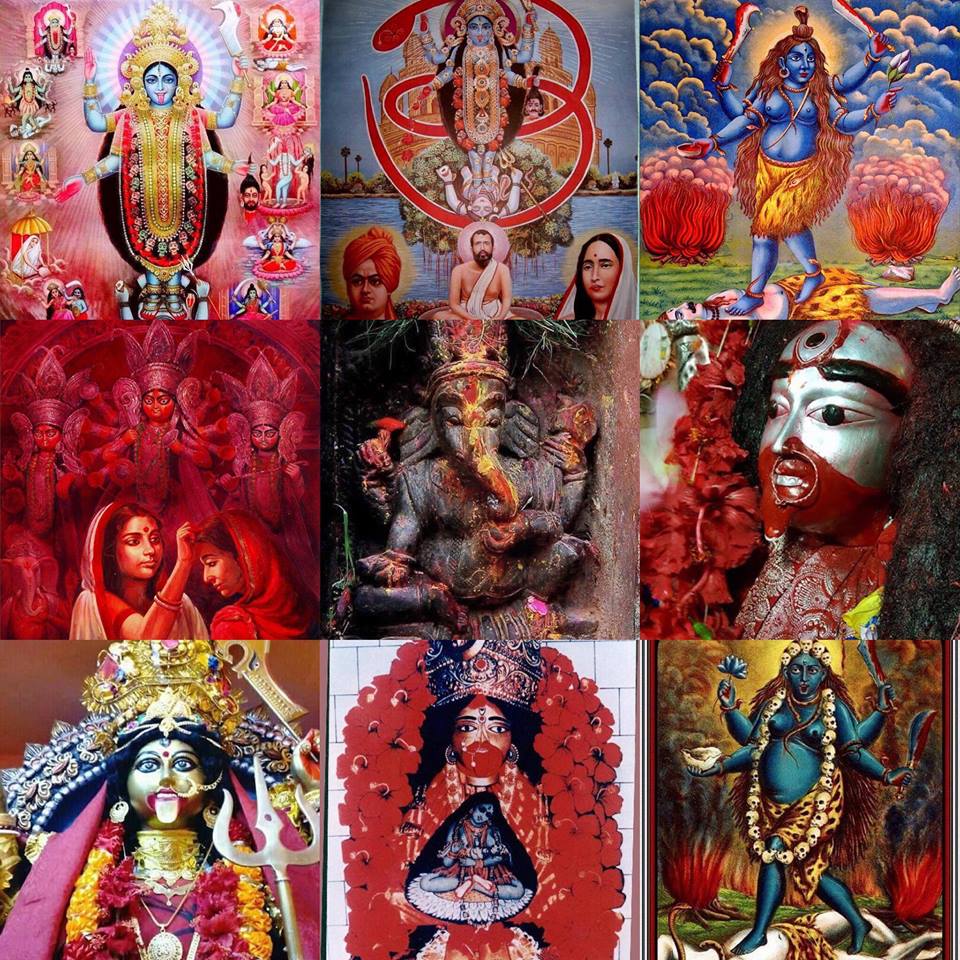
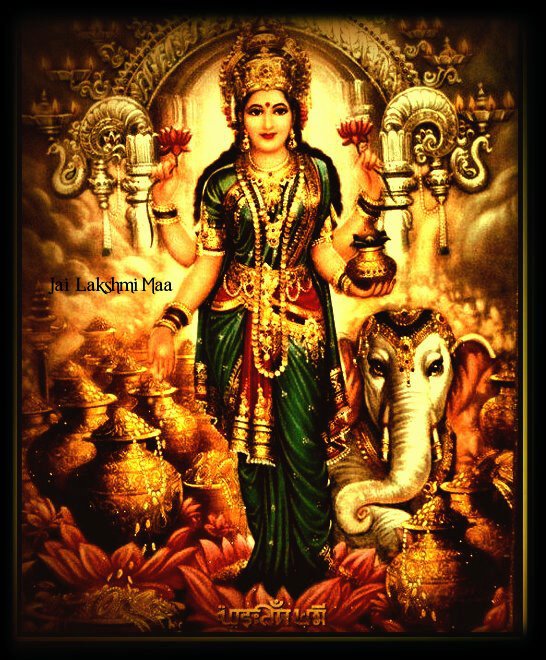

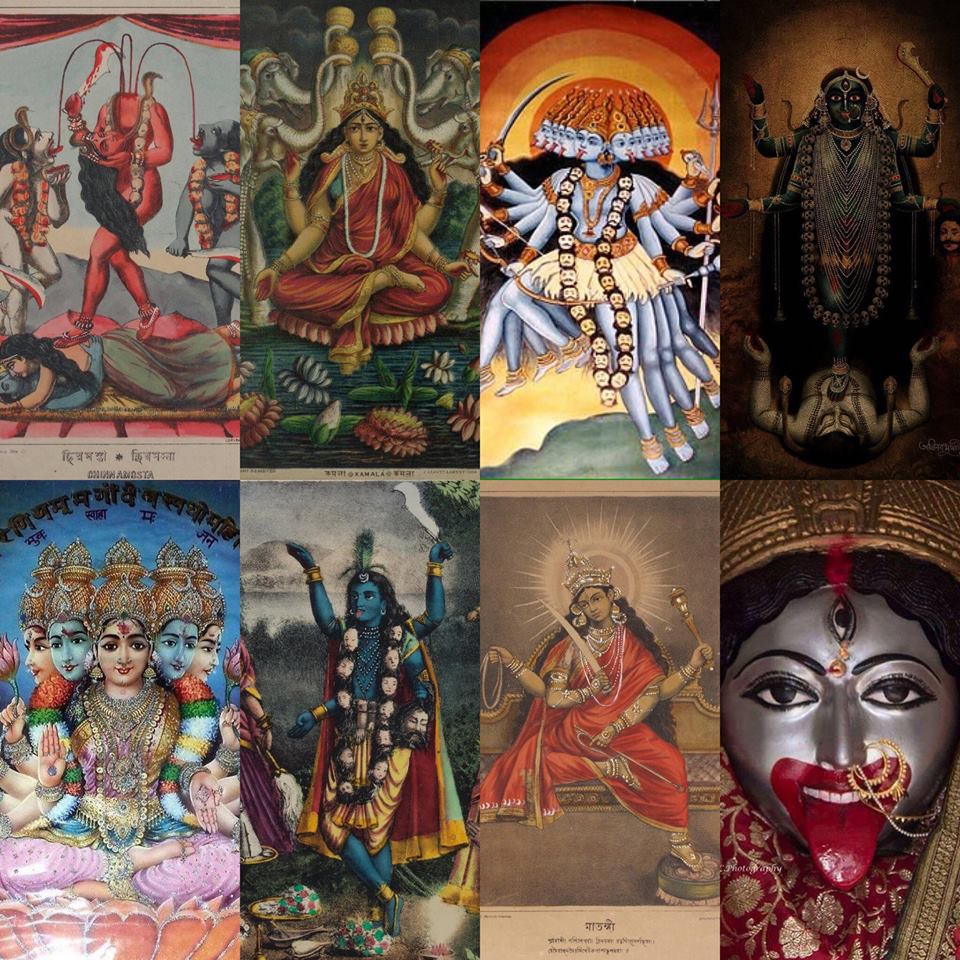
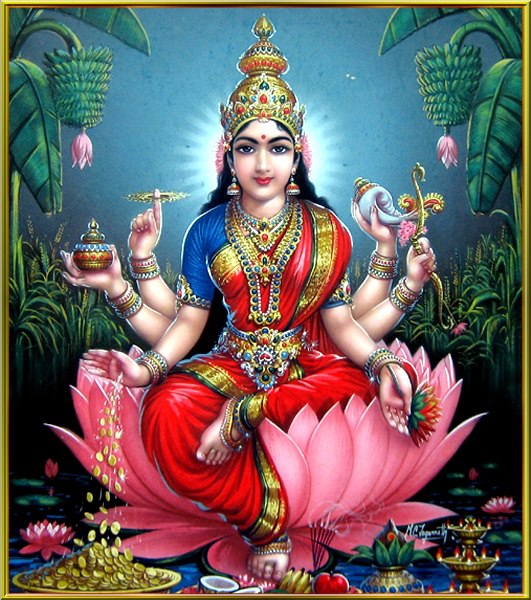



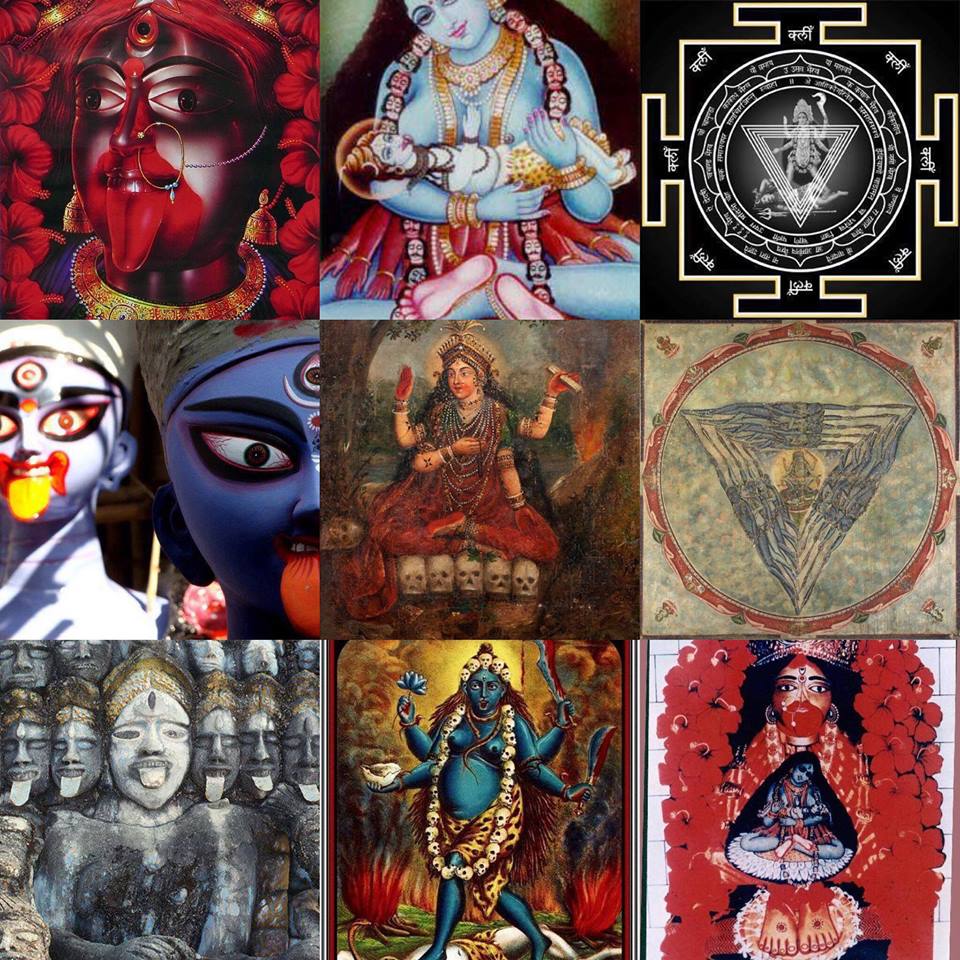


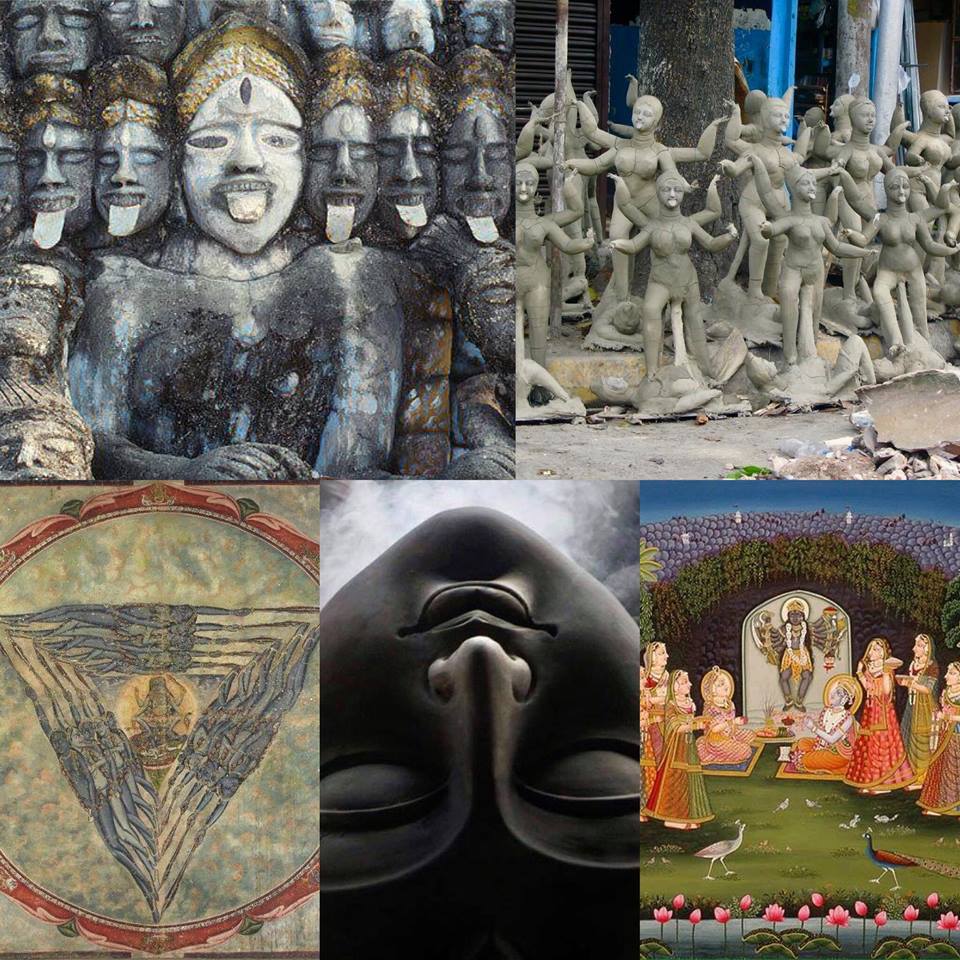







 RSS Feed
RSS Feed













































